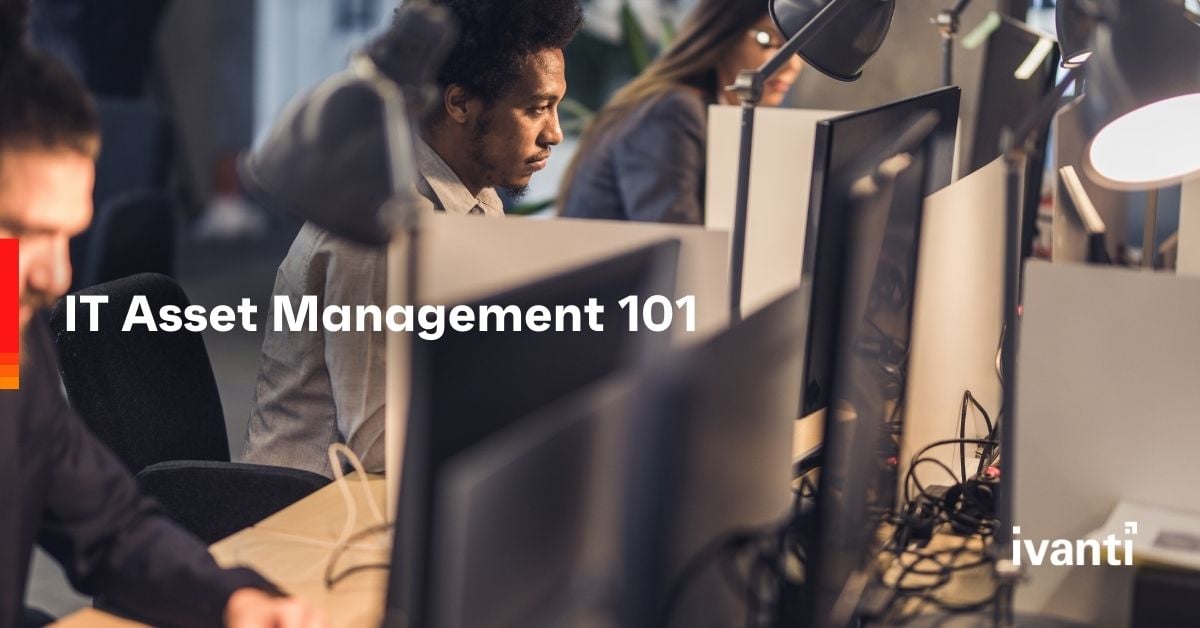IT Asset Management 101
If your business is growing, it won't be long until you need to develop an IT asset management protocol that allows you to manage your hardware and software assets throughout their lifecycle, helping to reduce business interruptions, plan budgeting effectively, mitigate risks, and gain high-level insight into how IT is driving success for your organization.
If you're ready to build the business case for IT asset management at your organization, we're offering a big short-cut with this in-depth primer into its benefits. We'll explain what IT asset management is, what kinds of assets it can be used with, how it differs for hardware and software, and how it can help organizations maximize return on their investments in both IT equipment and software licenses, whether on premises or in the cloud.
We will also talk about the risks that IT audits represent and look at the disposition process for assets at the end of their lifecycle. By the end, you'll have an overview of everything needed for success with IT asset management.
What Is IT Asset Management?
IT asset management is a system of business practices that seeks to maximize the value of IT devices and systems by combining financial, contractual, and inventory data to track the status of IT assets across their lifecycle. IT assets can typically be characterized as either hardware (the physical computing equipment that the organization owns), software (program assets that the organization either owns or licenses) or cloud services.
Here's how IT asset management applies to each category:
Hardware - Organizations with robust IT infrastructure can own a lot of computer hardware: desktop computers, laptops, keyboards and other peripheral components, printers, copiers, and more. To ensure that the hardware is well-maintained, organizations must keep track of what assets they own, where those assets are deployed within the organization, how they are used, how frequently they are used, their repair status, lifecycle information, and when they need to be replaced or disposed of.
Software - Software assets are typically licensed by the organization based on the number of users that will install the software. IT asset management processes for software allow organizations to monitor their compliance status with the end user licensing agreements that allow them to use licensed software applications. Your organization can monitor the status of your software licensing agreements, plan appropriately for future licensing payments, and monitor how many licenses are in use to ensure you're getting the most value for each software license that you pay for.
Software as a Service (SaaS) - Software hosted on the cloud and licensed via a subscription model raises a unique set of considerations when it comes to managing consumption, users, compliance, and spend. As SaaS continues to grow to represent a larger share of an organization’s software assets, processes and tools designed to address these considerations become increasingly important.
The role of IT asset management is to help organizations extract the maximum value from their IT investments. In that sense, IT asset management is really a set of business practices that enable businesses to make better decisions about how they manage their IT resources. The practice of IT asset management may involve the collection and management of IT asset data, but the real value is created when that information supports decisions about how best to maximize existing IT assets, when and whether to invest in new IT assets, and how to dispose of aged IT assets in a way that maximizes returns.
What Are the Features and Benefits of IT Asset Management Software?
At its core, IT asset management is a discipline based on the collection and analysis of data. In the past, organizations might have kept paper records that detailed their inventory of hardware and software assets, costs for each asset, and other data, but the proliferation of IT within organizations has made it virtually impossible to track IT assets in detail using a paper system.
Organizations that lead the way in IT use IT asset management software to keep up-to-date records of their IT assets that can be used to facilitate important decisions about how IT equipment is managed. Below, we've listed some of the key ITAM capabilities and what benefits your organization can expect from each one:
Comprehensive Hardware and Software Asset Tracking
A comprehensive data tracking system must lie at the heart of every effective IT asset management system. The ability to track assets and their attributes across several dimensions is a critical value driver for organizations that want to leverage IT asset management to improve their decision-making when it comes to IT.
The inventory tracking functionality of IT asset management software goes beyond a simple list of what assets you have at your disposal—it includes specific details and specifications for hardware and software that enable real transparency into your IT capabilities. Organizations use IT asset management software to track their computing assets, along with details like the product number, SKU, and date of purchase, as well as technical specifications like CPU type, processor speed, memory, available disk space, IP address, and numerous other parameters.
License Compliance Management Functionality
Software license compliance is a major issue for organizations that license third-party software. If you license software for multiple users at your organization from a third-party supplier, you may be subject to external audits to ensure that you are compliant with the terms of your service-level agreements. The world's biggest software providers pull in billions of dollars annually by investigating subscribers who are suspected of abusing their services. Whether you're aware of the situation or not, your organization could be hit hard by:
- "True-ups" - Outstanding fees that must be paid if the organization is found to be using licenses in excess of what is allowed in their service-level agreement
- Additional financial penalties for violating the terms of the service-level agreement
- A bill for the cost of the software audit that discovered the non-compliance issues
- Retroactive licensing fees if there is a long history of improper deployment of software that violates the service-level agreement
The bottom line is that organizations need to remain in compliance with license agreements to avoid an expensive software audit that results in big fines. IT asset management software allows organizations to automatically detect what software has been installed on each computer that is connected to the company's network. Automated software detection can be cross-referenced with service-level agreements to ensure compliance and avoid hefty penalties associated with an unsuccessful software audit.
Software Usage Data and Analysis
When an organization purchases 10 software licenses but installs the software 15 times, it could be subject to penalties for violating its service-level agreement with the software provider—but what if the organization purchases 15 licenses and only installs the software 10 times?
Organizations are using IT asset management software to assess software installation and analyze software usage data, helping to eliminate excess costs associated with unused software licenses. Software applications can be used to track the number of machines on which a certain application has been installed, as well as the actual usage statistics for the application. After all, a license paid for is still wasted if the application is never touched by the user—and that's an opportunity for the organization to cut costs.
Purchasing and Contract Management
Many organizations track IT purchases through a procurement system while managing IT inventory through a separate system; in many cases, the link between the two systems is missing. This means that the folks responsible for managing IT assets may not have full visibility of the service-level agreements and contracts that govern software licenses and may not be able to properly plan for future purchases or see when software contracts need to be renewed.
IT asset management software needs to provide the big picture view of how the organization is addressing its needs for hardware and software by integrating procurement, contracts and IT management into one dashboard. In this way, organizations can accurately assess their current software and project their future needs in the same interface, allowing for effective strategic planning and budget allocation.
On the hardware side, transparency into purchasing allows IT asset managers to budget correctly for turnover of IT inventory, plan for new purchases in accordance with inventory that is approaching the end of its lifecycle and analyze financial data alongside IT inventory usage data to determine the best route for IT asset disposition.
What Is IT Asset Disposition?
IT asset disposition (ITAD) is a business built around the safe and ecologically responsible disposal of obsolete, outdated or unwanted IT products.
When a piece of hardware reaches the end of its normal lifecycle, IT inventory managers need to make informed decisions about what will happen to the equipment. Is it worth the cost to refurbish the equipment? How much could the life of the equipment be extended by an investment in refurbishing, and is it worth the cost? Should the asset be resold? If so, how should it be priced and what resources will the organization allocate towards coordinating a sale? Should the asset be recycled? What are the applicable rules and regulations (and rebates!) associated with that, and what are the risks of improperly recycling the asset? The organization may even choose to dispose of the asset altogether through a third-party ITAD firm.
Getting Started with IT Asset Management
Ivanti provides industry-leading solutions for organizations that wish to enable better strategic decision-making by increasing visibility and transparency of their IT infrastructure.
Get started today by requesting a product demo and see what Ivanti can do for your organization.

